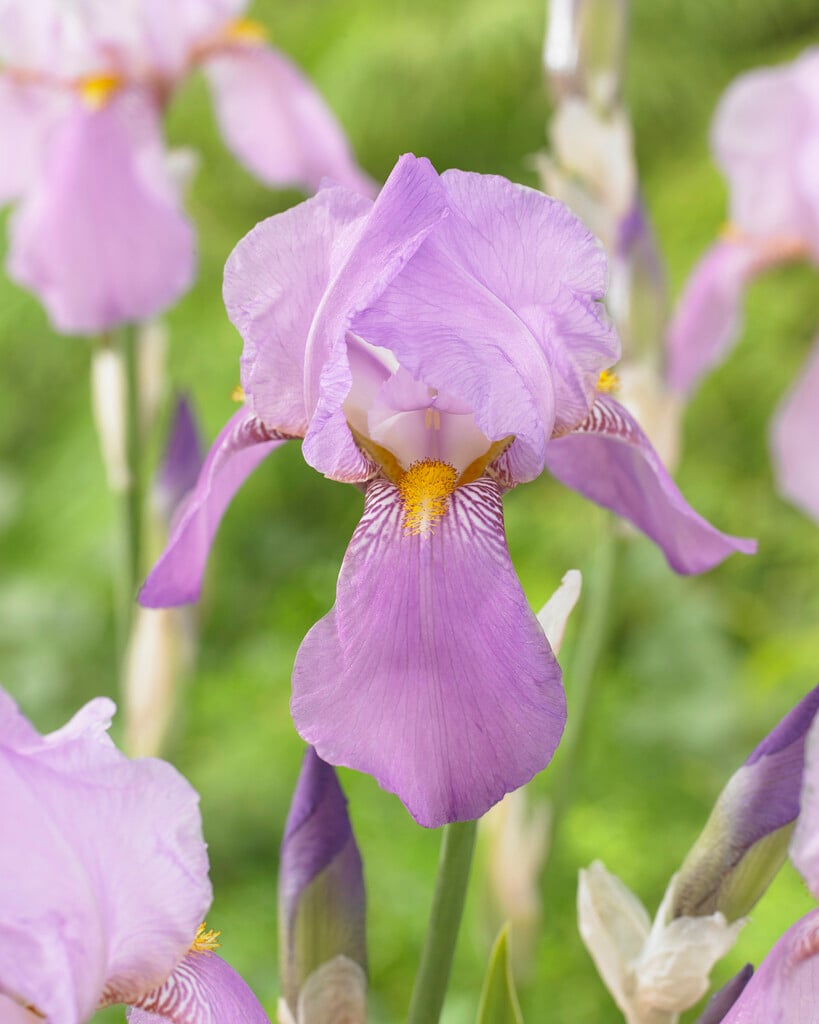Iris pallida
Dalmatian iris
A semi-evergreen, clump-forming perennial with sword-shaped, green to greyish-blue leaves up to 60cm long. In early summer, branched stems up to 1m high bear two to six scented, lilac-blue flowers with yellow beards, each up to 12cm across, that emerge from dry silvery bracts
Synonyms
Iris illyrica
Buy this plant
Size
Ultimate height
0.5–1 metresTime to ultimate height
2–5 yearsUltimate spread
0.1–0.5 metresGrowing conditions
Moisture
Well–drainedpH
Acid, NeutralColour & scent
| Stem | Flower | Foliage | Fruit | |
| Spring | Green Grey Silver Blue | |||
|---|---|---|---|---|
| Summer | Blue Purple | Green Grey Silver Blue | ||
| Autumn | Green Grey Silver Blue | |||
| Winter | Green Grey Silver Blue |
Position
- Full sun
Aspect
South–facing or West–facing
Exposure
Exposed or Sheltered Hardiness
H7Botanical details
- Family
- Iridaceae
- Native to GB / Ireland
- No
- Foliage
- Semi evergreen
- Habit
- Clump forming
- Potentially harmful
- Harmful if eaten. Wear gloves and other protective equipment when handling. Pets: Harmful if eaten. For further information and contact numbers regarding pets, see the HTA guide to potentially harmful plants
- Genus
Iris may be rhizomatous or bulbous perennials, with narrow leaves and erect stems bearing flowers with 3 large spreading or pendent fall petals, alternating with 3 erect, often smaller, standard petals, in late winter, spring or early summer
- Name status
Correct
- Plant range
- Alps
How to grow
Cultivation
Grow in well-drained, fertile, neutral to slightly acid soil in full sun
Propagation
Propagate by seed or by division. See dividing irises
Suggested planting locations and garden types
- Cottage and informal garden
- Cut flowers
- Flower borders and beds
Pruning
Remove any dying foliage in autumn, old flower stems can be cut down after flowering
Pests
Diseases
May be susceptible to aphid-borne viruses, bacterial soft rot and grey moulds; see Iris diseases
Get involved
The Royal Horticultural Society is the UK’s leading gardening charity. We aim to enrich everyone’s life through plants, and make the UK a greener and more beautiful place.